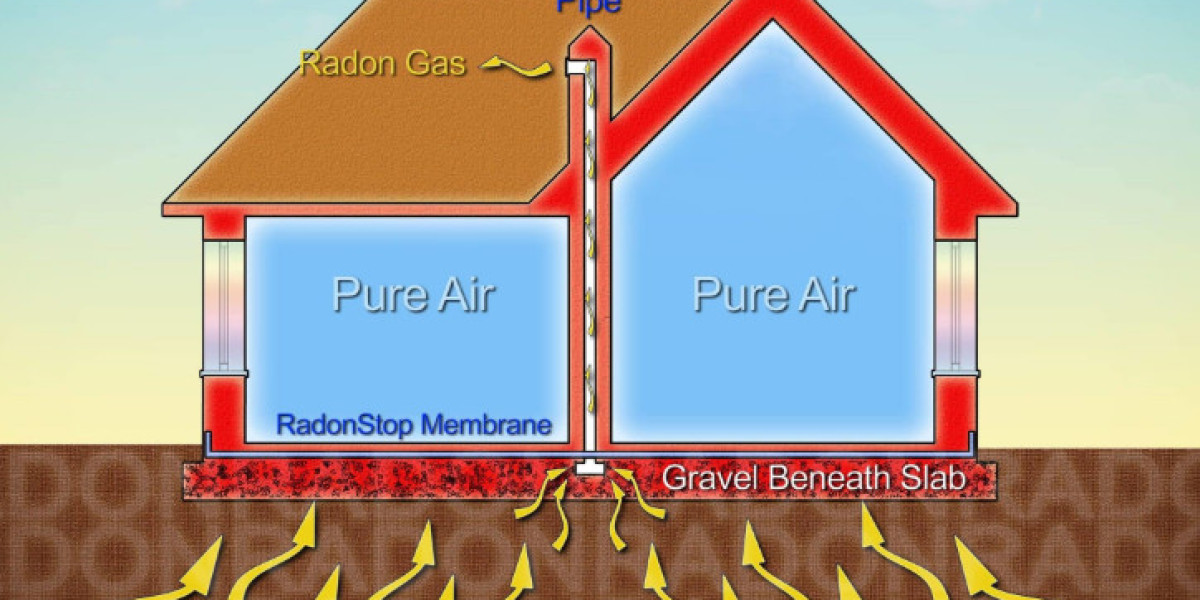Ensuring the safety and wellness of our family is a top priority for many homeowners. We meticulously lock our doors, control the cleanliness of our living spaces, and monitor our indoor air quality, which is often forgotten. Radon gas, an odorless, colorless, and tasteless radioactive gas, is a silent lurker in many homes, seeping in through the soil and posing severe health risks if levels are too high. In this extensive guide, we will walk you through the process of testing your home for radon, providing you with the peace of mind that your indoor space is a haven.
The Importance of Radon Gas Testing
Radon gas is no trivial matter, and the statistics make that clear. According to the Environmental Protection Agency (EPA), radon is the second leading cause of lung cancer after smoking and the leading cause among non-smokers. With such sobering figures, the necessity of routine radon testing in every home becomes evident.
What is Radon Gas?
Radon is a naturally occurring gas that comes from the breakdown of uranium in soil, rock, and water. It seeps into homes through cracks and other openings in the foundation, becoming trapped and leading to elevated concentrations. Long-term exposure to high levels of radon can lead to lung cancer, making it essential for homeowners to understand its sources and health effects.
Health Effects of Exposure
The impact of radon on health is primarily attributed to its decay products, which are inhaled and can become trapped in one's lungs. Over time, these decay products emit alpha particles that damage lung tissue, potentially leading to lung cancer. The risk is higher for smokers due to the combined exposure to radon and tobacco smoke.
Why Test for Radon Gas?
While some areas are more prone to radon due to geology, the only way to know the radon levels in your home is through testing. Even in regions with lower radon potential, individual homes can vary greatly in their radon levels, so testing is the only reliable method for homeowners to understand their risk.
Understanding the Need for Radon Testing
Do you live in an area with a high incidence of radon-related illness? While statistics can be frightening, they often function as a call to action for homeowners to test their homes and take steps to lower radon levels if necessary.
Potential Risks
Radon exposure doesn't produce immediate symptoms, but the long-term effects can be devastating. Knowing the radon levels in your home allows you to take preventative measures and reduces the risk of long-term health issues.
DIY Radon Testing Methods
There are several approaches to test for radon in your home, from quick and easy short-term kits to more precise and long-term continuous monitoring systems.
Short-term Testing: Activated Charcoal Kits
Available as simple DIY kits, these short-term tests are cost-effective and can provide reliable results within a few days. They are widely used to determine if further action is necessary.
Long-term Testing: Alpha-Track Detectors
For a more comprehensive view of your radon levels over time, alpha-track detectors are a preferred choice. They offer more accuracy but require placement for a longer duration, typically up to a year.
Continuous Radon Monitors
These electronic devices provide real-time radon readings and are more expensive than other options. They offer the convenience of continuous monitoring without having to wait for test results.
Preparing for Radon Testing
Proper preparation is crucial to ensure your radon test is as accurate as possible. We will cover various steps, such as closing windows and doors and where to place the test kits.
Steps to Prepare Your Home
Minimizing airflow in and out of the house is essential for accurate testing. Simple actions like sealing basement floors and plugging floor drains can help achieve an environment ideal for the test.
Factors to Consider
Before beginning the test, homeowners should take note of outside weather conditions. Extreme temperatures, high winds, and prolonged rain can all affect test results. Plan your radon test during a period of relatively calm weather.
Conducting the Radon Test
Whether you've chosen an activated charcoal kit or a long-term alpha-track detector, following the manufacturer's instructions is critical for an accurate reading. We will provide detailed steps for each method.
Activated Charcoal Kits
Activated charcoal is an effective absorbent for radon gas and is commonly used in DIY testing kits. We will walk you through the process of setting up the test and how to properly place the kit in your home.
Alpha-Track Detectors
Alpha-track detectors use small pieces of special plastic that record the damage made by alpha particles, giving an average radon level over a long period. We'll cover how to install these detectors in your home.
Continuous Radon Monitors
Setting up a continuous radon monitor is a more complex process. We'll explain the equipment placement and calibration needed to ensure accurate readings.
Interpreting the Results
Understanding the results of your radon test is crucial to knowing the next steps for your home's safety.
Radon Measurement Units
Radon levels are typically measured in picoCuries per liter of air (pCi/L). The EPA recommends taking action if levels are at or above 4 pCi/L.
Determining Acceptable Limits
What is considered a safe level of radon? We'll delve into whether your home's radon levels pose a risk to your health and the health of your family.
High Radon Levels: What to Do
If your test results indicate high radon levels, we will provide steps for immediate action, including contacting a professional for mitigation.
Taking Action: Radon Mitigation
For homes with elevated radon levels, mitigation is the next step. We will explore different methods used to reduce radon levels and ensure a safer indoor environment.
Overview of Mitigation Techniques
Homeowners have several options for reducing radon levels in their homes, from venting to the exterior to increasing ventilation in the affected areas.
Hiring a Professional Service
When considering mitigation, sometimes it's best to leave it to the professionals. We'll cover what to look for in a radon mitigation service and how they can help visit https://www.simonairquality.com.
Conclusion
Radon gas is a serious concern for homeowners' health. By understanding what radon is and how to test for it, you take a crucial step toward a safer home environment. We encourage you to take action today, as testing is the only way to know your home's radon levels, and remediation can prevent future health concerns. Your diligence in this matter may just save a life.
Promoting and Sharing Your Content
Sharing this comprehensive guide across your social media platforms, especially in homeowner groups or forums, can help raise awareness and position you as a thought leader on the topic. Consider the platforms your audience is most active on and adapt the content to fit the format. Remember to use relevant hashtags to increase reach and engagement. Additionally, you may want to collaborate with other professionals, such as environmental health experts, to validate your content and expand your audience. Finally, make sure your content is optimized for search engines by including relevant keywords and metadata. This not only improves your website's visibility but also ensures that those looking for information on radon testing are directed to your site.








